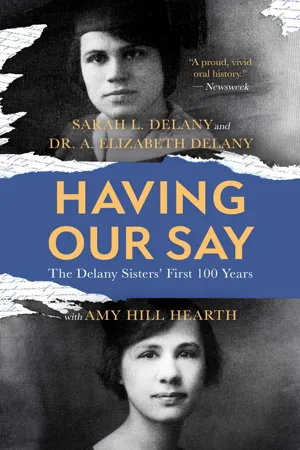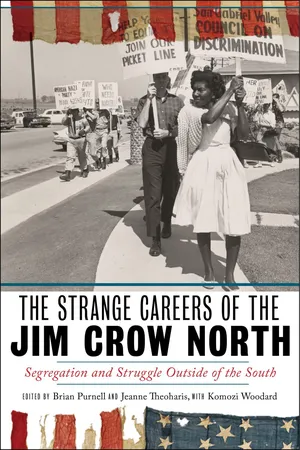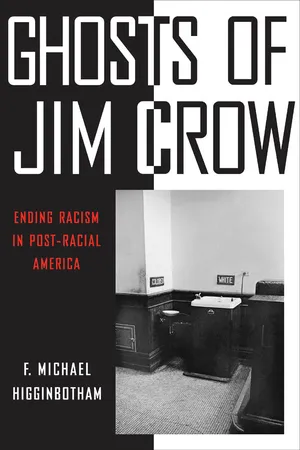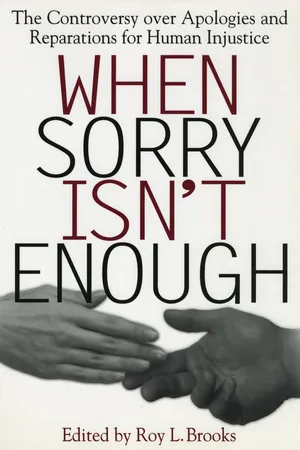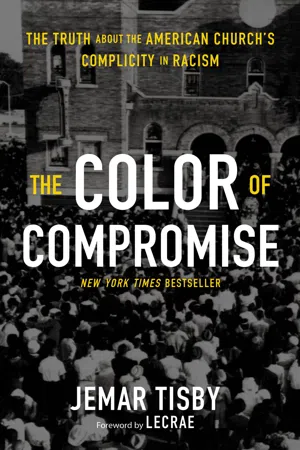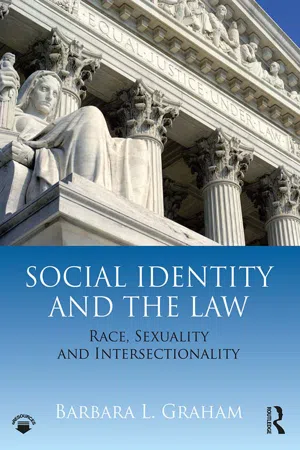History
Jim Crow
Jim Crow refers to the system of racial segregation and discrimination that was enforced in the southern United States from the late 19th century to the mid-20th century. These laws and practices aimed to maintain white supremacy and control over African Americans, leading to widespread inequality and injustice in areas such as education, housing, and public facilities.
Written by Perlego with AI-assistance
Related key terms
8 Key excerpts on "Jim Crow"
- eBook - ePub
Driving the Green Book
A Road Trip Through the Living History of Black Resistance
- Alvin Hall(Author)
- 2023(Publication Date)
- HarperOne(Publisher)
The Green Book existed.During the era of Jim Crow, millions of people in the United States, either actively or passively, not only indulged in bigoted and discriminatory behaviors and attitudes, they remained silent when they saw them happening. Politicians and community leaders wrote anti-Black policies into the laws and enforced them with sometimes severe penalties by local, state, and national government agencies wielding the full power of American society, up to and including the death penalty.The name “Jim Crow” was the colloquial term for a group of primarily southern, segregationist, anti-Black laws and practices, although segregation practices were found across the US. The name came from a fictional character created by a white minstrel singer named Thomas Dartmouth “Daddy” Rice in the 1830s. Caricaturing a stupid, clumsy enslaved man, Rice would wear blackface makeup and sing a song with the refrain, “Weel about and turn about and do jis so, eb’ry time I weel about I jump Jim Crow.” The popularity of Rice’s act in the United States and Britain led to “Jim Crow” becoming a popular derisive term for Black people, and then the name of the system by which, for generations, African Americans were controlled and denied participation in the freedoms written into the US Constitution.Under Jim Crow, Black Codes harshly restricted what people of color could do. In much of the country, Black people were prevented from voting, serving on juries, running for office, or defending their rights in court. They worked under systems of labor like sharecropping that were designed to keep them in poverty. Sharecropping was a farming practice in which someone, usually a white person, owned the land, while a tenant farmer, usually a Black person or family, worked the land for a share of the crop. During the planting and growing season, the tenant farmer would pay for seeds, tools, food, and rent using a charge account with the landlord farmer. Once the crop was harvested and sold, the tenant farmer would receive a small percentage of the sale price, minus the expenses accrued in the charge account. Some tenant farmers made a small profit or broke even. However, many did not make enough to pay off the charge account in full and therefore remained in debt to the landlord farmer year after year. When a sharecropper or any other Black person managed to amass a bit of money or property, unscrupulous white people supported by government officials would often seize it. - eBook - ePub
Having Our Say
The Delaney Sisters' First 100 Years
- Sarah L. Delany, A. Elizabeth Delany, Amy Hill Hearth(Authors)
- 2023(Publication Date)
- Blackstone Publishing(Publisher)
PART IVJIM CROW DAYSA GENERATION after the end of slavery, freedom for black Americans was still elusive. Strategies were being devised, such as poll taxes, to block black Americans from voting, and a flurry of racial restrictions was coming to be codified as "Jim Crow" laws. The Delany sisters recall the beginning of Jim Crow in North Carolina as "the day that everything changed."Jim Crow became entrenched in Southern society in 1896, with the Supreme Court ruling in the Plessy v. Ferguson case. The case stemmed from an incident in which a Louisiana citizen named Homer Plessy was arrested for refusing to sit in a "colored" railroad car. Mr. Plessy lost on his appeal to the Supreme Court, which sanctioned the establishment of "separate but equal" facilities for blacks and whites.There had long been segregation by custom, but the Jim Crow laws, named for a minstrel show character, made it legal and official. Under the new laws, black Americans faced separate — and inferior — facilities in every part of society, including schools, public transportation, and hospitals. Even public restrooms and drinking fountains in the South were labeled "Colored" and "Whites Only."By 1914 every state in the South had passed laws that, in effect, relegated Negroes to a lower status than whites. "We knew we were already second-class citizens," recalls Sadie Delany, "but those Jim Crow laws set it in stone."It would be decades before Jim Crow would begin to finally unravel. In 1954 the Supreme Court ruled in Brown v. Board of Education of Topeka, Kansas, - eBook - ePub
The Strange Careers of the Jim Crow North
Segregation and Struggle outside of the South
- Komozi Woodard, Jeanne Theoharis, Brian Purnell(Authors)
- 2019(Publication Date)
- NYU Press(Publisher)
8Jim Crow began in the North, not the South. Long before the Civil War, northern states like New York, Massachusetts, Michigan, New Jersey, Ohio, and Pennsylvania had legal codes that promoted black people’s racial segregation and political disenfranchisement. While these northern Jim Crow laws predated the South’s, these racial systems never dominated or defined the region in a uniform way. Throughout the nineteenth century, black and white abolitionists and free black activists challenged the North’s Jim Crow practices, won some victories, waged war against slavery in the South and the North, and even changed some of the North’s racist laws in housing, voting, education, and marriage. Nonetheless, northerners wove Jim Crow racism into the fabric of their social, political, and economic life in ways that shaped the history of the region, and the entire nation. Jim Crow, outside of the South, coexisted, even thrived, alongside efforts to reform its worst manifestations in social and political life. This characteristic distinguished it from its southern version. A commonplace saying captured the two Jim Crows perfectly: in the South, black people could get close to white people, so long as they did not become too “uppity” by advocating for their social, political, or economic equality with whites. In the North, black people could get as “uppity” as they want—they could run successful businesses, consume luxury goods, and sit next to white people on the bus—so long as they did not try to get too close to whites, as their neighbors, sexual partners, classmates, or union brothers. This aphorism’s wisdom recognizes that Jim Crow, whether in the North or in the South, demanded that black people remain in their “place.” The essays in this volume reveal this history of northern systems of racial segregation, as well as the resistance people mounted against them.9 - eBook - ePub
Ghosts of Jim Crow
Ending Racism in Post-Racial America
- F. Michael Higginbotham(Author)
- 2013(Publication Date)
- NYU Press(Publisher)
28 The “harmless” humor on the minstrel stage created an atmosphere that accepted and justified segregationist laws. Those laws maintained and exacerbated physical and psychological distance between the races. Segregation spread and got ever stronger during the latter half of the 19th century, fueled by the notions of black inferiority celebrated in Jim Crow minstrel shows.Jim Crow laws provided a combination of government hindrance of economic opportunities for blacks and empowerment for whites. The notion of white superiority/black inferiority was strengthened in many forms—eliminating blacks from sporting competition with whites; preventing educational opportunities for blacks; generating housing segregation such as all-white towns or designated black areas; excluding blacks from certain jobs; creating government programs, like farm assistance, of which poor and middle-class whites were the primary beneficiaries; and refusing to acknowledge or recognize black inventions and technological advancements.29The Supreme Court Embraces Jim Crow: Plessy v. Ferguson
While black separation practices existed prior to Reconstruction, constitutional sanction of race separation, allowing for widespread and comprehensive coverage, would not occur until the end of the 19th century.30 In 1896, the Supreme Court, in Plessy v. Ferguson ,31 upheld a Louisiana statute that prohibited black passengers from riding alongside whites in railway cars. In doing so, the Court placed its imprimatur on discrimination—even the justice who disavowed race separation embraced notions of white superiority.32 - eBook - ePub
When Sorry Isn't Enough
The Controversy Over Apologies and Reparations for Human Injustice
- Roy L. Brooks(Author)
- 1999(Publication Date)
- NYU Press(Publisher)
7Jim CrowPassage contains an image
Introduction
Passage contains an image
66Redress for Racism?
Roy L. Brooks“[T]he negro would appear to stand on a lower evolutionary plane than the white man, and to be more closely related to the highest anthropoids.” This conclusion, memorialized in the 1910 edition of the prestigious Encyclopaedia Britannica , provided the “scientific” justification for the systematic, government-sanctioned exclusion of African Americans from mainstream society between the end of Reconstruction (circa 1875) and the late 1960s/early 1970s. Known as the “Jim Crow” era, this nearly one-hundred-year period was America’s Age of Apartheid. It was a time in which nonwhites were accorded second-class citizenship under the law, and in which African Americans were singled out for particularly harsh treatment. African Americans lived in a world of fear—beatings, maimings, murder, and constant racial indignities—as well as limited opportunities. Despite the special nature of their suffering, despite the freshness of their claims—the absence of which, it was said, was fatal to their slavery claims—African Americans still have not received so much as an apology from the federal government. Why this is so is the focus of Part 7 .The distinguished scholar John Hope Franklin (with Alfred A. Moss, Jr.) begins our study with a brief overview of nearly a hundred years of legalized discrimination and segregation. Circumventing the recently adopted Fifteenth Amendment, which gave African Americans the right to vote, the South created numerous schemes to prevent them from exercising this key civil right. The intent was not just to deny the franchise to former slaves, but to all African Americans. As one white southerner expressed it: “I am just as opposed to Booker Washington as a voter, with all his Anglo-Saxon re-enforcements, as I am to the coconut-headed, chocolate-colored, typical little coon, Andy Dotson, who blacks my shoes every morning. Neither is fit to perform the supreme function of citizenship.” - eBook - ePub
- Jemar Tisby(Author)
- 2019(Publication Date)
- Zondervan(Publisher)
The name “Jim Crow” comes from a minstrel character played by Thomas D. Rice in the 1830s and 1840s. Even though it is easy to characterize the worst forms of racism as an exclusively southern phenomenon, Rice actually hailed from Manhattan. Although he was not the first white actor to utilize “blackface,” his career skyrocketed when he began painting his face black and playing the role of a likable trickster named Jim Crow. The plays portrayed stereotypes about black intelligence, sexual appetites, contentment under slavery, and obeisance to white people. In the years following the Civil War, as white people scrambled to recover a semblance of the racial order they once knew, they reached back to Rice’s plays and saw them as an apt description of the social conditions of the late nineteenth century.Jim Crow took the form of both legal policies and informal traditions designed to segregate and subjugate black people in American society. This system extended to all areas of the country, not just the former Confederate states. The North and West, for instance, had “sundown towns”—communities where black people had to be out before sundown or face violent repercussions. Some cities even posted signs that read, “Nigger, Don’t Let the Sun Go Down on You in This Town.” Towns such as Appleton, Wisconsin; Levittown on Long Island; and the Chicago suburb of Cicero, among hundreds of others, kept their communities intentionally all-white. Larger cities, including New York and Tulsa, could not entirely exclude racial minorities,but they conducted periodic “purges” of black neighborhoods to intimidate residents into moving out or staying confined to certain parts of the city.27 Other Jim Crow laws and customs mandated that black and white baseball teams could not play on the same field, black and white people had to be buried in separate cemeteries, white students could not have textbooks that originally had been assigned to black students, and prison inmates had to be divided by race.The sexual dimensions of Jim Crow deserve special attention. During this era, the prohibition against interracial sexual relations and marriage became one the most inviolable of social conventions in America. Under Jim Crow, the myth of the Lost Cause positioned white women as the epitome of purity and vulnerability, and by contrast, black men came to symbolize raw lust and bestiality. According to the racist myths about sexuality, brutish black men always prowled around for delicate white women on whom they could unleash their unholy appetites. In a stark demonstration of the hypocrisy and illogical nature of racism, Jim Crow advocates almost never mentioned the long-standing and more common pattern of powerful white men raping vulnerable black women. - eBook - ePub
Social Identity and the Law
Race, Sexuality and Intersectionality
- Barbara L. Graham(Author)
- 2018(Publication Date)
- Routledge(Publisher)
Civil Rights Cases is that Congress did not enact another major civil rights law until 89 years later, the Civil Rights Act of 1964, under its power to regulate interstate commerce. After the death of Chief Justice Waite, there was considerable personnel change on the Supreme Court. From the beginning of the Fuller Court in 1888 until the end of the Taft Court (1930), nine presidents appointed twenty-five Justices to the Supreme Court, including three Chief Justices. Despite the remarkable turnover during this forty-two year period, the Supreme Court’s jurisprudence in the area of racial equality was steadfastly entrenched in a conservative direction. By the 1890s, ideas of black intellectual, biological and cultural inferiority dominated popular, scientific and jurisprudential thought. The Court’s decisions during this era espoused a jurisprudence grounded in state prerogatives and laissez-faire ideology.American-Style Apartheid
The racial caste system that operated primarily but not exclusively in Southern and border states during the Reconstruction period until the mid-1950s is commonly referred to as the era of Jim Crow segregation. Southern states began passing Jim Crow laws around 1890 and passed a second wave of laws a decade later. Laws requiring separation of the races were comparable to the Black Codes adopted in 1865 after the ratification of the Thirteenth Amendment. In both contexts, the intent of the segregation laws was to force people of color into a continued state of subjugation and quasi-slavery status.AMERICAN-STYLE APARTHEID BOX 2.2Jim Crow in the American South“The extremes to which caste penalties and separation were carried in parts of the South could hardly find a counterpart short of the latitudes of India and South Africa. In 1909 Mobile passed a curfew law applying exclusively to Negroes and requiring them to be off the streets by 10 p.m. The Oklahoma legislature in 1915 authorized its Corporation Commission to require telephone companies “to maintain separate booths for white and colored patrons.” North Carolina and Florida required that textbooks used by the public-school children of one race be kept separate from those used by the other, and the Florida law specified separation even while the books were in storage. South Carolina for a time segregated a third caste by establishing separate schools for mulatto as well as for white and Negro children. A New Orleans ordinance segregated white and Negro prostitutes in separate districts. Ray Stannard Baker found Jim Crow Bibles for Negro witnesses in Atlanta courts and Jim Crow elevators for Negro passengers in Atlanta buildings.” - eBook - ePub
White Party, White Government
Race, Class, and U.S. Politics
- Joe R. Feagin(Author)
- 2012(Publication Date)
- Routledge(Publisher)
Under this renewed two-party system, white Democratic Party officials aggressively sought an end to black political power in the South. Many from the old slaveholding elite regained political power and successfully worked to disenfranchise mostly Republican black voters, reduce the number of black elected officials, and re-establish the Democratic Party’s power lost during Reconstruction. From the 1880s to the early 1900s, racial segregation was extensively developed across southern and border state areas by Jim Crow laws, all of them passed by elite and middle-class whites. Over the long Jim Crow era, indeed up until the 1960s, the lives of black Americans there were highly restricted and regimented by extreme segregation laws, including those mandating racially segregated schools, workplaces, restrooms, drinking fountains, telephone booths, and even courtroom Bibles. By the early 1900s, intensely authoritarian white Democratic Party regimes dominated southern states, strongly enforcing segregation laws. The successful establishment of extensive and extreme segregation for black Americans was a major political coup for a supposedly defeated oligarchical elite, and the near-slavery of legal segregation meant that the federal government had not really “freed” black Americans after slavery. Gradually, too, southern white Democrats also regained substantial power in national political institutions, especially the very undemocratic U.S. Senate. From this renewed position of power they set up major roadblocks to congressional attempts to end racial segregation and expand, even modestly, civil rights; this went on until the 1960s. 37 In southern and border areas ordinary white farmers and workers played a critical role in enhancing and maintaining this elite-created system of legal segregation, as well as in the de facto racial segregation in northern areas
Index pages curate the most relevant extracts from our library of academic textbooks. They’ve been created using an in-house natural language model (NLM), each adding context and meaning to key research topics.

